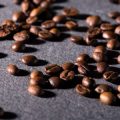1. The Pressure Myth: Is AeroPress Espresso Real Espresso?
One of the most common myths surrounding the AeroPress is that it can make true espresso. While the AeroPress is a fantastic tool for brewing rich, concentrated coffee, calling it “espresso” in the traditional sense isn’t entirely accurate. Let’s break down why.
What Defines Espresso?
In the world of specialty coffee, espresso isnt just about taste—its about how its made. True espresso requires:
- High pressure: Around 9 bars (130 psi) of pressure
- Fine grind size: Similar to powdered sugar
- Short brew time: Typically 25–30 seconds
- Crema formation: A golden layer of foam on top, formed by emulsified oils and CO₂ under pressure
How Does AeroPress Compare?
The AeroPress uses manual pressure, generated by pushing a plunger through a cylindrical chamber. Even though it feels forceful, it only generates around 0.35 to 0.75 bars of pressure—nowhere near what’s needed for traditional espresso.
| Brew Method | Pressure (bars) | Grind Size | Brew Time | Crema? |
|---|---|---|---|---|
| Espresso Machine | ~9 bars | Fine | 25–30 sec | Yes |
| AeroPress | ~0.35–0.75 bars | Medium-fine to fine | 60–90 sec (varies) | No (or very minimal) |
Why the Confusion?
The confusion often comes from the taste and texture of AeroPress brews. When using less water and a finer grind, the result can be bold and syrupy—similar to espresso in flavor profile but not in method or structure. Some recipes even use metal filters and inverted techniques to increase body and mimic espresso more closely.
AeroPress Espresso-Style Recipes Are Great — Just Not Espresso
If youre looking for a strong, flavorful cup without investing in a high-end machine, AeroPress is a stellar option. Just keep in mind: its espresso-like, not actual espresso.
The Bottom Line on Pressure
You don’t need 9 bars of pressure to enjoy amazing coffee at home. But if you’re after authentic espresso—with crema and all—you’ll want to stick with a dedicated espresso machine or explore portable espresso makers designed to hit those pressure levels.
AeroPress may not make true espresso, but it absolutely delivers delicious results on its own terms.
2. Grind Size Confusion: Do You Really Need Espresso-Fine Grounds?
One of the most common myths about using an AeroPress is that you need to use ultra-fine, espresso-like grinds to get a good cup. While its true that the AeroPress can handle fine grounds, the idea that this is the only way to brew with it isnt just limiting—it’s flat-out wrong.
Understanding Grind Size and Its Role
The grind size you choose plays a huge role in how your coffee turns out. It affects everything from flavor to brew time to ease of pressing. The AeroPress is incredibly versatile, which means you don’t have to stick to one specific grind size.
What Happens with Different Grind Sizes?
Here’s a quick breakdown of what you can expect when using various grind sizes in your AeroPress:
| Grind Size | Brew Time | Flavor Profile | Ease of Pressing |
|---|---|---|---|
| Espresso-Fine | Short (1–1.5 mins) | Bold, intense, sometimes bitter | Difficult – more pressure needed |
| Medium-Fine (like table salt) | Moderate (1.5–2 mins) | Smooth, balanced, clear notes | Moderate – easy to press |
| Medium-Coarse | Longer (2–3 mins or more) | Milder, lighter body | Easiest – minimal resistance |
So, Whats the Best Grind for You?
If you love experimenting or want to tailor your coffee exactly to your taste, try starting with a medium-fine grind and adjust based on your flavor preferences and how much effort youre willing to put into pressing. Remember, there’s no single “correct” grind—just what tastes best to you.
AeroPress Flexibility is Key
The beauty of the AeroPress lies in its flexibility. Whether youre grinding beans at home or buying pre-ground coffee, you’ve got options. Don’t let the myth of needing espresso-fine grounds hold you back from exploring all the ways this brewer can deliver a great cup.
![]()
3. Water Temperature Myths: Does It Have to Be Boiling?
One of the most common misconceptions in AeroPress brewing is that you need boiling water—212°F (100°C)—to make a great cup of coffee. While it might seem logical, especially if youre used to traditional drip or French press methods, using boiling water with an AeroPress can actually do more harm than good.
Why Boiling Water Isn’t Ideal
Using water straight off the boil can lead to over-extraction. This means your coffee might taste bitter, harsh, or even burnt. The AeroPress is designed to brew quickly and under slight pressure, so overly hot water accelerates extraction too much, pulling out undesirable flavors from the grounds.
So, What’s the Sweet Spot?
The ideal temperature for brewing with an AeroPress is typically between 175°F and 205°F (79°C to 96°C). Within this range, you get balanced extraction—enough heat to pull out the rich oils and acids that give coffee its flavor, without going overboard.
Optimal Water Temperature Guide
| Temperature (°F) | Temperature (°C) | Flavor Profile |
|---|---|---|
| 175°F | 79°C | Smoother, less acidic, tea-like qualities |
| 185°F | 85°C | Balanced sweetness and mild acidity |
| 195°F | 90°C | Bolder body, more developed flavors |
| 205°F | 96°C | Full extraction, more intensity, slight bitterness possible |
How to Get the Right Temperature Without a Thermometer
If you don’t have a thermometer handy, just let your boiling water sit for about 30 seconds before pouring. This usually brings it down to around 200°F or lower—perfect for AeroPress brewing.
A Quick Tip:
If youre aiming for brighter flavors and a cleaner cup (especially with light roasts), try starting with 175°F–185°F. For a fuller-bodied brew or darker roasts, go closer to 195°F–205°F.
The bottom line? You don’t need boiling water to make amazing AeroPress coffee. In fact, dialing back the heat just a bit can take your home brew from average to exceptional.
4. Inverted Method Controversy: Better Brew or Coffee Trend?
When it comes to AeroPress brewing, one of the most talked-about techniques is the inverted method. If youve spent any time in coffee forums or watched a few YouTube tutorials, youve probably seen people flip their AeroPress upside down and swear it’s the only way to brew. But is this technique a flavor game-changer or just another trend that caught on?
What Is the Inverted Method?
The inverted method simply means assembling your AeroPress upside down—plunger on the bottom, chamber on top—so you can steep your coffee without it dripping through the filter before youre ready. Once its brewed, you flip it over onto your cup and press as usual. This gives you more control over steeping time.
Why Do People Use It?
Fans of the inverted method often say it gives them:
- More control over brew time
- A bolder, fuller flavor
- Less chance of under-extraction
They believe this technique allows for better saturation and extraction of coffee grounds because nothing starts dripping until you flip and press.
Does It Really Improve Flavor?
This depends a lot on personal taste. Some people love the richer, more full-bodied result they get with the inverted method. Others find that it can lead to over-extraction if youre not careful with timing. Heres a quick comparison:
| Brewing Method | Flavor Profile | Ease of Use | Control Over Brew Time |
|---|---|---|---|
| Standard Method | Smoother, cleaner cup | Very easy | Moderate (starts dripping right away) |
| Inverted Method | Bolder, heavier body | Slightly tricky (requires flipping) | High (you control exactly when to press) |
Is It Worth the Hype?
If youre into experimenting and want to squeeze every bit of flavor from your beans, the inverted method might be worth trying. Just keep in mind that its a little messier and riskier (hello spills!) than the standard upright approach. For everyday brewing, many people still stick with the classic method for its simplicity.
Pro Tip:
If you do try the inverted method, be extra careful when flipping—especially if youre brewing with hot water close to boiling. A stable surface and a steady hand go a long way!
5. Paper vs. Metal Filter: Flavor Drama or Practical Choice?
When it comes to AeroPress brewing, one of the most hotly debated topics among home brewers is the choice between paper and metal filters. Some folks swear by the clean cup of a paper filter, while others love the boldness a metal filter brings. But is it really about flavor drama, or just a matter of what works best for your routine? Let’s break it down.
Flavor Clarity
Paper filters are known for producing a cleaner cup. They trap more of the coffee’s natural oils and fine particles, which results in a brighter taste with more clarity. This can be great if you’re using light roasts and want to highlight fruity or floral notes.
Metal filters, on the other hand, allow more oils and micro-grounds to pass through. This creates a heavier mouthfeel and deeper flavor — think more body and richness. If youre into darker roasts or espresso-like intensity, this might be your jam.
Body and Mouthfeel
The texture of your coffee changes depending on your filter choice:
| Filter Type | Mouthfeel | Taste Notes |
|---|---|---|
| Paper | Smooth, clean | Crisp, bright flavors |
| Metal | Full-bodied, textured | Bolder, richer tones |
Ease of Cleanup
This part often gets overlooked but can make a big difference in your daily brewing habits.
- Paper Filters: Super simple. Just toss the used filter (compost it if you’re eco-conscious) and rinse out the cap.
- Metal Filters: Reusable and eco-friendly, but they require a bit more effort to clean. You’ll need to rinse thoroughly and occasionally deep-clean to prevent oil buildup.
A Quick Note on Sustainability
If reducing waste is important to you, metal filters win points for being reusable. But keep in mind that high-quality paper filters are biodegradable and many are compostable too.
The Bottom Line?
This isn’t about right or wrong — it’s about what fits your taste preferences and lifestyle. Whether you’re team paper or team metal, both options have their perks. Try both and see which one hits the sweet spot for your morning brew.


